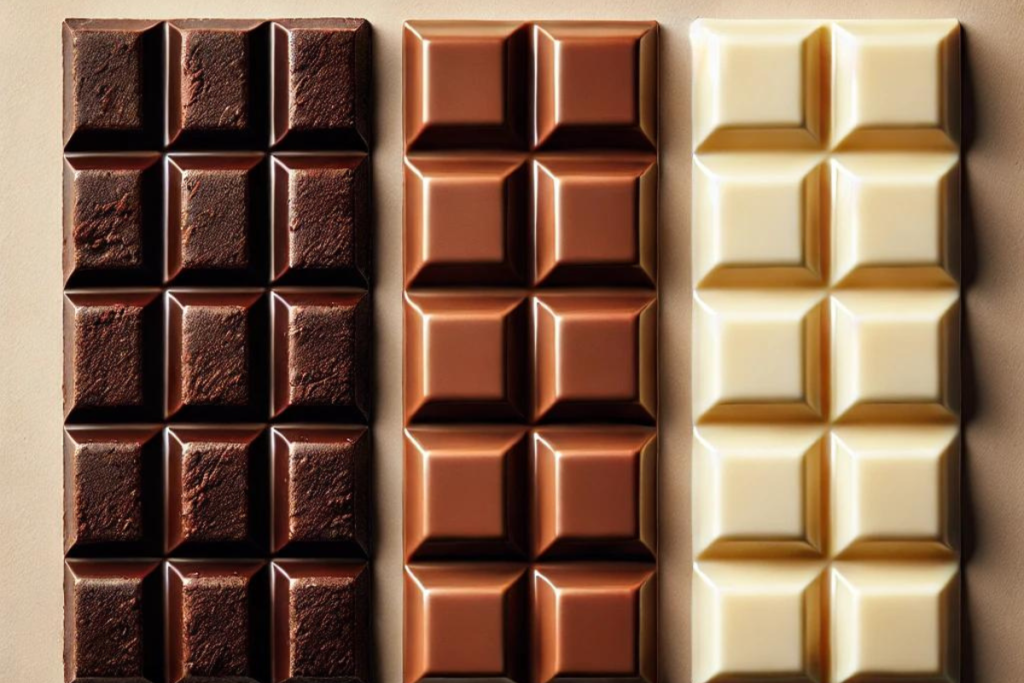Chocolate and caramel-infused treats are two beloved flavors in the world of desserts. Both satisfy sweet cravings but differ significantly in terms of ingredients, taste, texture and how we use them in baking and cooking. By understanding these differences, you can choose which one to enjoy based on your preferences or the recipe you’reyou’reg. Overall, each has its place in confections, appealing to different tastes.
What is Chocolate?

Chocolate comes from cocoa beans, which grow on the cacao tree. As a result, there are several varieties of chocolate, each offering a distinct flavor profile and composition. The most common types include:
- Dark chocolate: Known for its high cocoa content and bittersweet taste.
- Milk chocolate: Sweeter and creamier, with added milk solids.
- White chocolate: Made from cocoa butter, sugar, and milk solids but lacks cocoa solids.
ChocolChocolate’stility makes it a favorite in everything from candy bars to baked goods and beverages. It fits nicely in both sweet and savory dishes. For more information on the benefits of dark chocolate, visit HealthHealthline’s on dark chocolate. If you’reyou’reested in learning about different types of chocolate, check out The Spruce Eats’ Eats’iew.
What is Caramel-infused Chocolate?

This sweet treat merges the richness of chocolate with the buttery, sugary flavor of caramel. Caramel forms when sugar heats and browns, producing a smooth and slightly burnt sweetness. Combined with chocolate, it creates an indulgent layer of complexity that elevates many desserts and candies.
Some popular ways to enjoy these treats include:
- Chewy caramel chocolates: Soft caramel coated with chocolate.
- Hard caramel varieties: Crunchy caramel paired with a chocolate shell.
- Layered desserts: Caramel and chocolate combine for depth in cakes and bars.
If you want to make your caramel treats, try this caramel recipe from AllRecipes to get started.
Critical Differences Between Chocolate and Caramel-infused Treats
Although both provide sweet flavors, their ingredients, texture, and taste differences stand out. Let’s Take a closer look at what sets them apart.
Ingredients:
- Chocolate contains cocoa solids, cocoa butter, sugar, and sometimes milk.
- Caramel chocolates combine chocolate with caramel, made from sugar, butter, and cream.
Texture:
- Chocolate is known for its smooth, melt-in-your-mouth texture.
- Caramel can vary from chewy to complex, depending on its preparation.
- Combined, these two ingredients create a balance of richness, chewiness, or crunchiness.
Taste:
- Chocolate, depending on its cocoa content, delivers a rich, sometimes bitter flavor.
- Caramel brings a sweet, buttery flavor with a hint of bitterness.
- Together, they offer a unique blend of sweet and deep flavors that appeal to many dessert lovers.
For a more detailed guide on making caramel, check out The KitchnKitchn’sby-step instructions.
Uses in Confectionery

Chocolate:
People use chocolate in a wide variety of products, such as:
- Candy bars and bonbons.
- Baked goods like cakes, brownies, and cookies.
- Hot beverages like hot chocolate.
In addition, chocolate serves as a base ingredient in more elaborate recipes. For example, you can make this Triple Chocolate Mousse Cake for a luxurious dessert.
Caramel-infused Treats:
These treats frequently appear in:
- Caramel-filled candies and bars.
- Desserts where caramel and chocolate are layered, like brownies or pies.
- Caramel toppings for cakes and other sweets.
Try this Sourdough Discard Recipe to incorporate caramel flavors into your treats for an easy and delicious recipe.
Health Benefits and Concerns
Chocolate:
- Dark chocolate packs antioxidants, offering benefits for heart health and overall wellness.
- It can also boost serotonin levels, which help improve mood and reduce stress.
However, overeating milk or white chocolate—due to their higher sugar content—may lead to weight gain and other health concerns. Therefore, moderation is key when enjoying chocolate. For more information on chocolchocolate’sh benefits, visit Harvard T.H. Chan School of Public Health.
Caramel-infused Treats:
These treats contain more sugar and calories than plain chocolate. Consuming them regularly could negatively affect your health. Additionally, the sticky nature of caramel increases the risk of dental issues if not cleaned off properly after eating.
In summary, both chocolate and caramel-infused chocolates offer delicious and unique experiences. Whether you prefer the rich depth of chocolate or the sweet, chewy indulgence of caramel, both provide delightful choices. Ultimately, your preference and the dessert you’reyou’reg will guide your decision.
Explore recipes that blend chocolate and caramel to create unforgettable desserts for more ideas on using these flavors together. For instance, you can start with this Black Gold Cake recipe for something truly decadent. For more inspiration on caramel desserts, visit Taste of Home’sHome’sel dessert collection.
